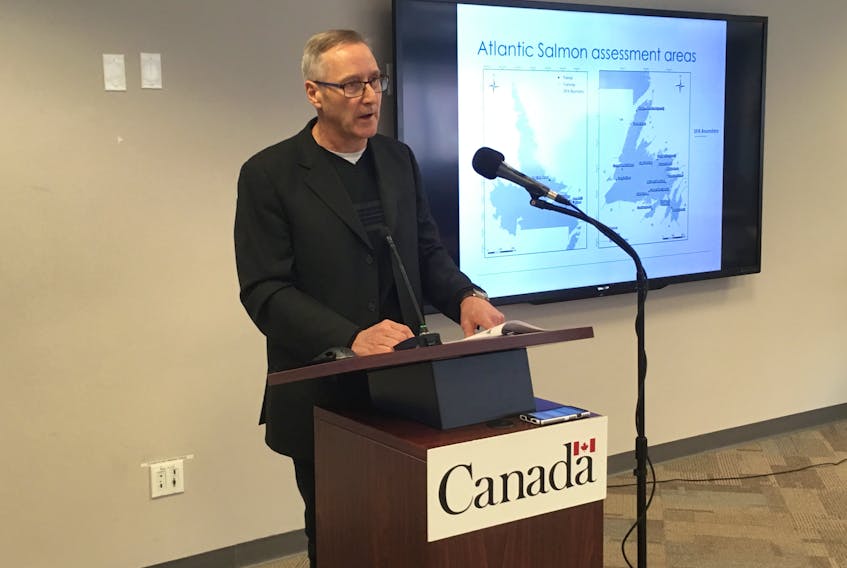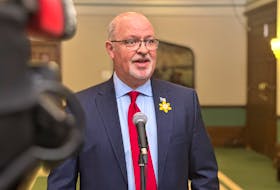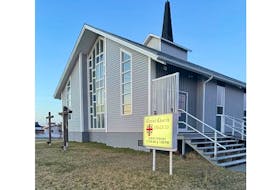The Department of Fisheries and Oceans has found a “highly unusual” drop off in Atlantic salmon numbers in many rivers throughout Newfoundland and Labrador, sustained for the second year in a row.
“We’ve never seen anything like this,” said Geoff Veinott, a Department of Fisheries and Oceans research scientist, who provided a briefing in St. John’s Monday morning, expressing concern with declines that are not isolated.
In 2017, the DFO salmon counts on 15 rivers in Newfoundland showed declines in salmon returns on 12 rivers, reaching to greater than 30 per cent below the average count from the last five to six years.
Related stories:
Science advisory meetings are for scientists: DFO
N.L. salmon anglers asked to respect fishing regulations
A look for salmon eggs (spawning escapements) found they were below river-specific points — and considered in a “critical zone” — on three of four of the DFO-monitored rivers in Labrador and nine of the 15 rivers in Newfoundland.
Returns of Atlantic salmon on the south coast of Newfoundland also do not show recovery, Veinott said. Counts at Conne River in 2017 were the lowest on record, with 32 years of data in hand.
Recreational fishery information is still coming in from anglers, but it’s estimated 19,400 fish were retained and 22,800 caught and released during the year.
The Labrador Indigenous and subsistence fishery involved about another 13,600 salmon, with that count down from the five-year average. Genetic analysis shows the salmon being caught in Labrador are fish originating from Labrador, as opposed to the island or elsewhere — 95 per cent to 99 per cent being of Labrador origin.
The salmon declines are over such a broad area, poaching would not explain it in Veinott’s opinion. “(And) there’s no smoking gun in environmental data,” he said.
He said it is clear new salmon are generally surviving from their river to estuaries. There are some deaths in the estuaries, but the majority occur beyond, in the ocean environment.
“Again, marine survival still seems to be the black box,” he told The Telegram, asked about the small number of salmon surviving to return.
In terms of management, it was noted when certain rivers are deemed catch and release and other rivers anglers can keep their catch (following all applicable regulations), the time and fishing effort increases on the rivers where retention is OK.
But Veinott said there was no recommendation put directly to the minister by the scientists involved in the assessment. The numbers and information have gone to Fisheries management and are being released to the public.
Related stakeholder meetings are getting underway and any decisions for action on the fisheries management side will incorporate both the numbers and stakeholders, with recommendations to come from Fisheries management, according to DFO.
The department is expected to follow a precautionary approach, guided by its conservation standards.
Provincial Fisheries Minister Gerry Byrne has been public in his disappointment after DFO did not permit him to attend the Canadian Science Advisory Secretariat Atlantic salmon assessment meeting, held Feb. 28 to March 1, reviewing and finalizing the information now going out to the public.
As The Telegram reported Friday, DFO has taken the position to limit the number of attendees at these meetings, to keep focus on the scientific evaluation and best determination of the state of the stock. The secretariat, a national body, makes the decision on attendees.
The Telegram is following up with Byrne on the assessment.
More to come.









